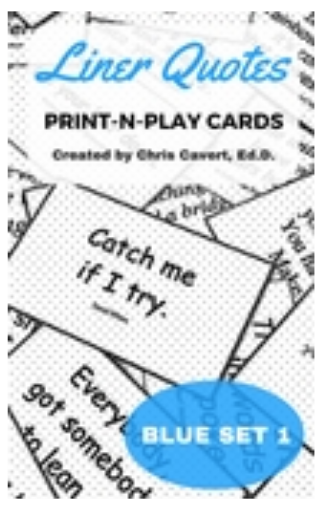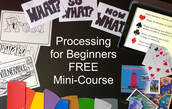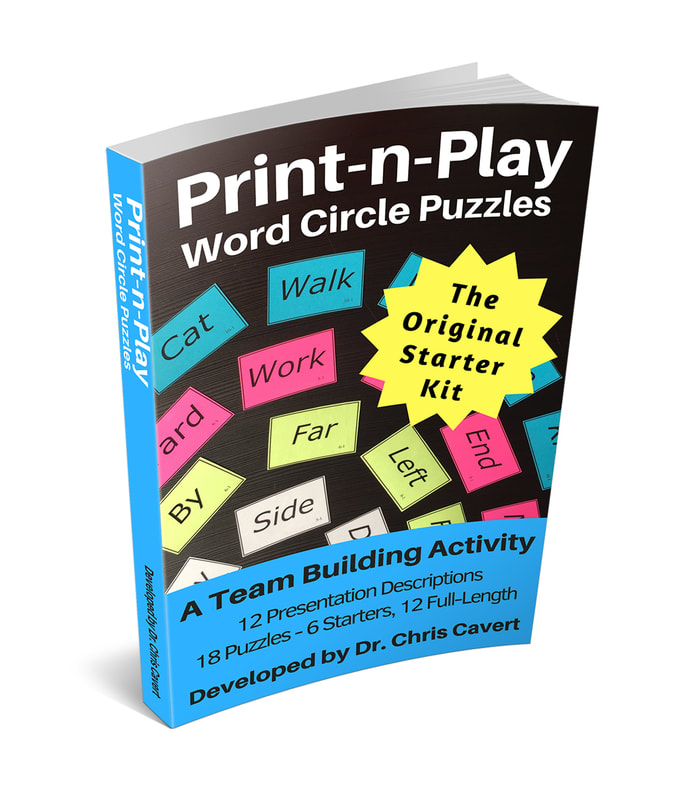What do You Need: You'll need one standard deck of playing cards for 30 to 52 participants (if the group size is under 30, I use other methods for getting into different sized groups - like Back-to-Back or People to People). If you have 53 to 104 participants in your group, you'll need two decks of playing cards - the two decks need to have different back logos or colored patters. (If you are working with more that 104 participants, another way of creating groups might be better - like, a predetermined list of players in a group or handing out colored bandanas randomly as people join in your program.)
Before starting this one, you need to prep the cards (this is covered in the video, but I thought I'd include it here since I already had this written!). All the Aces will be at the top of the deck (no matter how many decks you use) then, all the twos, then three, then fours, fives and so on - the Kings will be at the bottom of the deck.
When you're set to distribute, call the players in near you and then deal out one card to each person in the group. This might take a little time, minute or two, but it's a nice way to say, "Hi" to everyone in your group. (By looking at the cards you have left over, you can determine how many people are in the group and how many smaller groupings you want to make.)
Card Terminology Be sure to teach everyone the language you are going to use for the groupings. As noted in the video:
- There is the BACK, the logo or colored pattern
- There is the FACE, the side with numbers, letters and shapes (suits)
- The RANK, this is the value of the card - Aces, 2s, 3s, 4...10s, Jacks, Queens, Kings
- The SUITS, Clubs, Spades, Hearts & Diamonds
- Finally, there are two COLORS, red & black
The Blind Shuffle: Once everyone has a card, ask them to exchange cards with others until you say, "Stop!" (Let them exchange cards for about 15 seconds.) After you have called the stop, let them know how the groupings will play out. Here's how it works. You are going to share a grouping of cards (examples below). Everyone does their best to arrange themselves into the grouping. If someone cannot find a grouping, he/she can find you and you will help him/her get into a group (depending on how many cards were dealt, you might simply place players from the remainder into other groups near by - this is also explained a bit more in the video).
Activity Idea, Grouping Commonalities: When everyone is in the specified group you directed, the task is to find as many things in common with each other as possible. After each grouping gets together, they will have three minutes to discover how many things they have in common - a nice way just to get people talking and learning a little bit about each other (e.g., all have a bike, all like peperoni pizza, all have pets). After three minutes, the facilitator calls for a blind shuffle, calls a "STOP", checks to see if everyone has one card, then calls a new grouping.
Examples
One Deck of Cards for about 50 Players (in video):
- Pairs - Like Rank & Same Color
- Groups of 4 - Like Rank
- Groups of 6 or 7 - Like Suit, Evens and Odds
- Groups of 12 to 13 - Like Suits
- Groups of 25 or 26 - Like Colors
Two Decks of Cards for about 60 Players (in video):
[First take out the clubs of both decks. Then, Take out the Jacks, Queens & Kings of the remaining Hearts, Diamonds and Spades - this leaves you with 60 cards]
- Pairs - Same Rank, Same Suit
- Groups of 3 - Same Rank, Same Back
- Groups of 5 - Same Suit, Same Back, Odds and Evens
- Groups of 6 - Same Rank
- Groups of 10 - Same Suit, Same Back
- Groups of 12 - Two Ranks get together, Aces and 2s, 3s and 4a, 5s and 6s and so on.
- Groups of 15 - Same Color, Odds and Evens
- Groups of 30 - Same Color
Two Decks of Cards for about 100 players (bonus - not in video):
- Pairs - Same Rank, Same Suit
- Groups of 4 - Same Rank, Same Back
- Groups of 6 or 7 - Same Suit, Same Back, Odds and Evens
- Groups of 8 - Same Rank
- Groups of 12 or 13 - Same Suit, Same Back
- Groups of 16 or 17 - Two Ranks together, AND you'll need to distribute the players with the Kings to other groups.
- Groups of 26 - Same Suit
Let us know what other sorts of activities you like to do when moving through groupings of different sizes. Share it in the Comments - Thanks.
All the best,
Chris Cavert, Ed.D.






 RSS Feed
RSS Feed